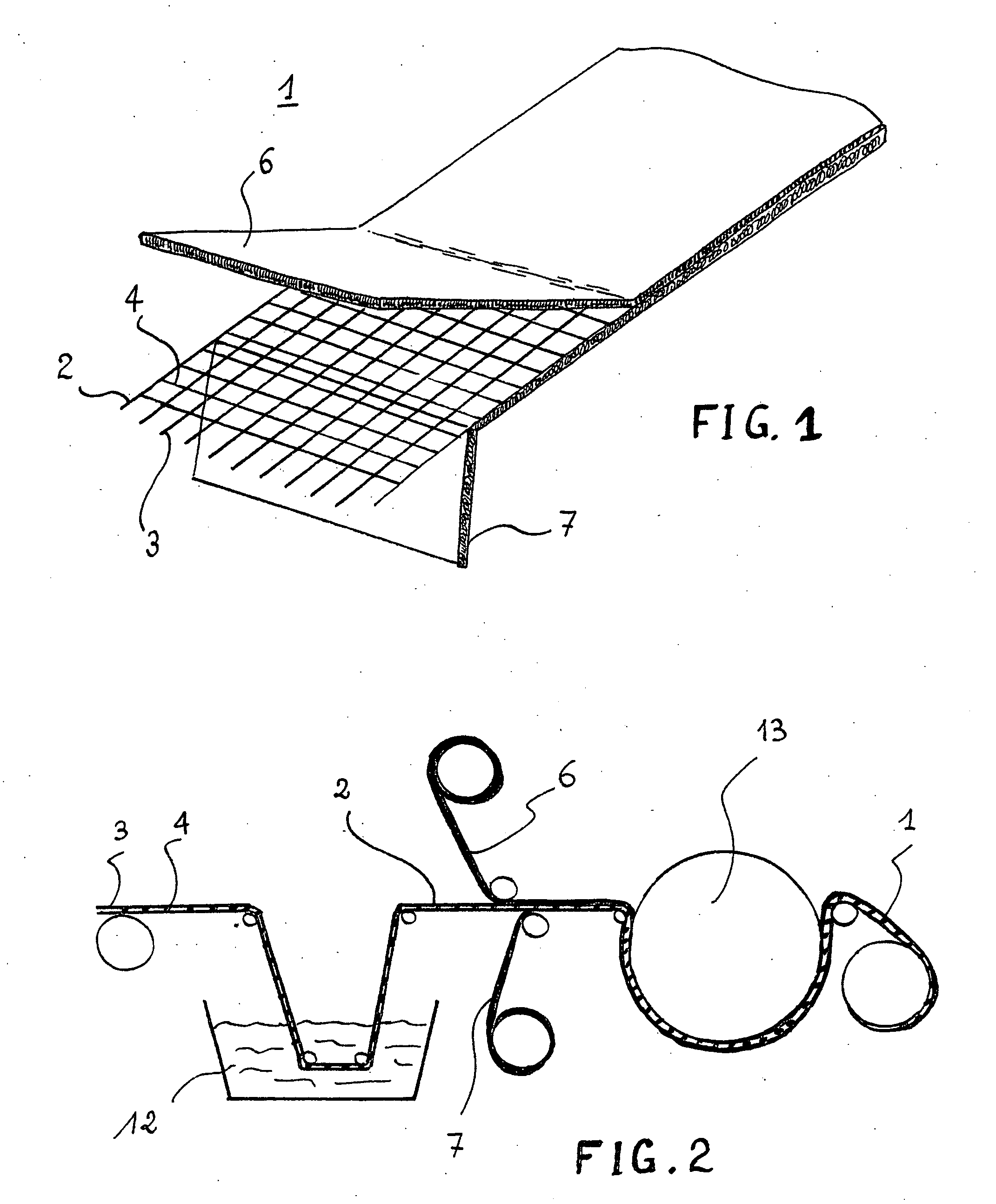Textile composite intended for mechanical reinforcement of a bitumen-based waterproof coating
- Summary
- Abstract
- Description
- Claims
- Application Information
AI Technical Summary
Benefits of technology
Problems solved by technology
Method used
Image
Examples
Embodiment Construction
[0031] As shown in FIG. 1, the composite (1) comprises three separate layers, namely a grid (2) which has, on each of its surfaces, a non-woven fabric (6, 7). More precisely, the grid (2) consists of warp yarns (3) and weft yarns (4). A grid comprising warp and weft glass fibre yarns of 68 tex with 4 yarns per centimetre and a mesh size of approximately 2 mm can be produced for example. One can also produce a mixed grid having 3 yarns / cm in each direction by combining, per centimetre, 1 glass fibre yarn of 136 tex and 2 polyester yarns of 110 tex with an approximate mesh size of 3 mm.
[0032] The non-woven fabric (6) intended to be placed on the upper surface of the waterproof coating is based on glass fibres. More precisely, this non-woven fabric can be based on fibres having a diameter of the order of 9 to 17 μm and a length of 10 to 25 mm. This non-woven fabric has a basis weight of the order of 50 g / m2. Good results are obtained by using a non-woven fabric marketed under the part...
PUM
| Property | Measurement | Unit |
|---|---|---|
| Electrical resistance | aaaaa | aaaaa |
| Mechanical properties | aaaaa | aaaaa |
| Tenacity | aaaaa | aaaaa |
Abstract
Description
Claims
Application Information
 Login to View More
Login to View More - R&D
- Intellectual Property
- Life Sciences
- Materials
- Tech Scout
- Unparalleled Data Quality
- Higher Quality Content
- 60% Fewer Hallucinations
Browse by: Latest US Patents, China's latest patents, Technical Efficacy Thesaurus, Application Domain, Technology Topic, Popular Technical Reports.
© 2025 PatSnap. All rights reserved.Legal|Privacy policy|Modern Slavery Act Transparency Statement|Sitemap|About US| Contact US: help@patsnap.com


